
OR
#OPINION
BP Koirala in the lens of changing geopolitics
Published On: May 2, 2024 08:30 AM NPT By: Dr Dinesh Bhattarai
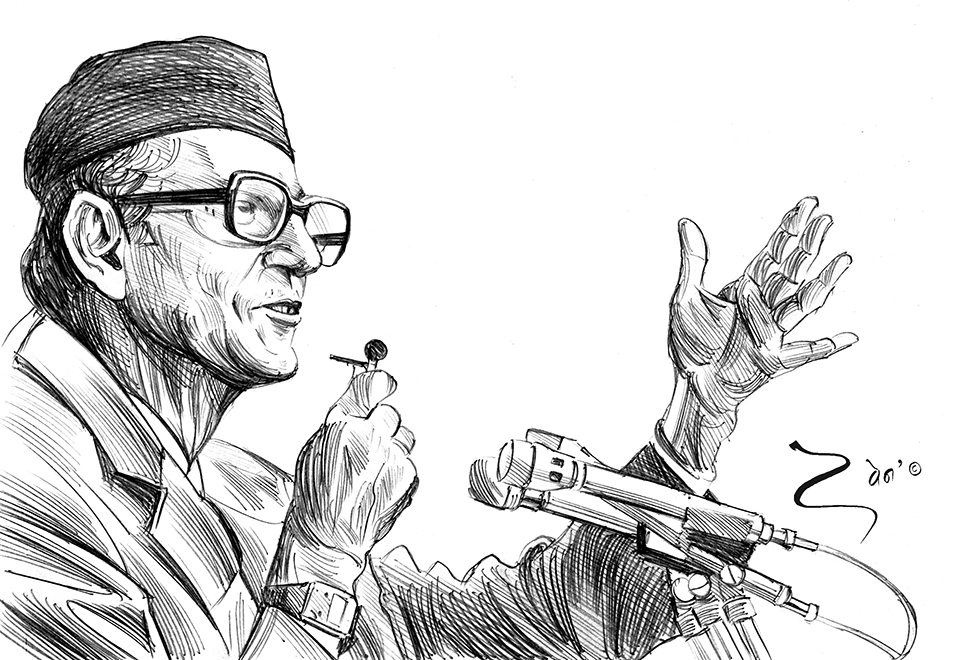
The lessons of history help plan the future roadmap.
BP Koirala was the first elected Prime Minister of Nepal. In the first ever general elections held in Nepal in 1959, his party Nepali Congress obtained two thirds majority in the House of Representatives. Threatened by his several progressive policies and programmes announced and initiated, King Mahendra known for his congenital instincts for unrivaled powers, dismantled the Parliamentary system of governance on December 15, 1960, and sent elected Prime Minister Koirala, just in power for eighteen months of his five year term, to rigorous imprisonment for eight long years for no reason and fault. It was an arrest of an idea, the silencing of an idea by throwing him behind the bars. When the king arrested BP, he did not arrest a person, but an idea and pushed back the time that refused to yield to the king's personal desires and ambitions. B.P. Koirala was released in 1968, and forced to live in exile in India for eight years.
It was the height of the Cold War. In the late sixties and seventies, a new wave of changes was rapidly blowing and new geopolitics was in the making with South Asia becoming a center of it. Though the Cuban Missile crisis of 1962 that nearly resulted in nuclear war was behind, tensions between two superpowers and their proxies were building up underneath the surface. The disintegration of Pakistan in 1971 following the liberation of Bangladesh in December 1971 was a major geopolitical development.The princely Himalayan state of Sikkim was absorbed into the Indian Union in April 1975. Recalling his conversations with king Birendra, BP tells Bhola Chatterjee that, “we should not permit a Sikkim type of situation to develop here; we should not allow a situation to develop as in Iran; and we should not allow the situation like that developing in Afghanistan, (Bhola Chattejee, Portrait of a Revolutionary, 1982, 134).
Unfolding security environment appeared to be as complex and severe for small Himalayan countries like Nepal. Pakistan has always been a fertile land for military takeovers. No elected government has ever been allowed to complete its full tenure. In 1977, General Zia UlHaq not only seized power but also sent the elected Prime Minister Zulfikar Ali Bhutto over to the gallows. Afghanistan was witnessing upheaval. South Asia was increasingly becoming a region marked by instability, as its history is marred by profound disharmony, deep mistrusts, misunderstandings and conflicts. There are several unresolved issues that continue to fuel discontent, frictions, anger, cross-border terrorism, that always threaten to take a dangerous turn heightening the risk of escalation into a full-scale war. The Cold War seems to have never ended in South Asia. There are undeclared wars, coups and civil wars, ethnic and religious pogroms, making South Asia as a fissiparous region. As the Soviet walked into Afghanistan in 1979, it exacerbated tensions and caused concerns in many quarters. South Asia today has become a hotbed of international terrorism further destabilizing not only the region but shaking the whole world.
BP showed the foresight to reflect on the seriousness of the evolving geopolitics posing threats to the well-being of free nations. He decided to end his exile in India and returned home on December 30, 1976 (Paush 16, 2033 Bikram Sambat). Though there were obvious dangers and risks of his return, he insisted that he should end his exile, as people came first for him. Realizing the gravity of the evolving situation, he returned home at a time when there were seven charges of treason and sedition hanging over his head which could have resulted in a death sentence. He identified the future of Nepal in democracy, and it was considered yet another journey back to democracy. BP then thought that battles between democracy and dictatorship and between moderation and extremism were the central issues of his time. BP’s return was a catalyst for change, which was manifested in months following his return. History is a witness that it was under the dictatorship that religious extremism, terrorism and polarization festered and grew, threatening not only the region but also the entire world.
The lessons of history help plan the future roadmap. If we learn the lessons well, it can guide us to help address the current situation intelligently and effectively. Every process marches forward amidst strengths, weaknesses, threats, and opportunities. As a country that has always been in a time of transition, Nepal stands at a crossroads today. The tides of history, economics, and democracy, along with the waves of leftist populism, authoritarianism, extremism, radicalism, have brought the country to this point.
In an appeal issued to the Nepali people on December 30, 1976, B.P. Koirala underlined the need for ‘national unity and reconciliation.’ He exhorted that “the country is facing a national crisis, and it has been deepening in recent years.” He warned that “foreign interests have started intrigues in our country, and that has helped them in making Nepal a center of international conspiracy.” He further said, “in our country today, there is a preponderance of self-seeking, communalism (regionalism), individualistic mentality and a tendency to look to foreign lands. In such a situation such as this, nationalism is the first casualty.”
Only an economically strong country can strengthen its security. Nepal has no economic pillar to its security. It is excessively dependent on outside powers particularly India. So, the first and foremost need is to strengthen its economic strength. In the absence of such a pillar, poverty, ignorance, frustration, disappointments and hopelessness breed. It has caused enough pain, untold sufferings, dangerous and unnecessary collisions among the Nepalis. Koirala had premonition of a dangerous situation developing in Nepal and around the subcontinent. At this juncture, he took a bold decision to return home to save the country. This write up attempts to contextualize BP’s views of the then geopolitical situation in the current context.
Then
BP Koirala became the Prime Minister when the Cold War was at its peak. The world was divided into two poles – free world led by the United States and the socialist bloc by the then Soviet Union. It was a period of intense hostility between them, but without actual wars on ground. Fighting on the peripheries involved them, but not directly. Border tensions were building up between Nepal’s two immediate neighbours-China and India.
India was considered close to the Soviet Union whereas Pakistan was a reliable ally of the US in South Asia. Pakistan was the route Henry Kissinger took in July 1971 to undertake a secret visit to China which opened up China to ‘international mainstream.’ India had concluded a Twenty-year Treaty of Peace, Friendship and Cooperation with the then Soviet Union on August 9, 1971, when war was looming with Pakistan over India’s support for the liberation of the people of former East Pakistan (now Bangladesh). The twenty year treaty was interpreted “as a warning to China and America to keep their hands off” the South Asian Subcontinent. The disintegration of Pakistan and liberation of Bangladesh in December 1971 was a major geopolitical development changing the geopolitical map of the subcontinent. After the Indo-Pak war of 1971, America sent “the Seventh Fleet into the Bay of Bengal hoping to frighten India and Bangladesh.”
Geopolitical developments were fast moving. In 1968, President Richard Nixon wrote an article in the Foreign Affairs and said that it was unwise to leave the world’s largest country out of the international mainstream for too long. Nixon stated that the do everything, know it all approach to global security could not continue. For the second time since the start of the Cold War, Washington had ‘to find a way to do more with less.’ He wrote: “America cannot and will not conceive all the plans, design all the programs, execute all the decisions and undertake the defense of the free nations of the world. We will help where it makes a real difference and is considered in our interests.”
There was a Sino-Soviet border clash in August 1969, and Washington saw it as an opening to exploit the differences between the two communist regimes. America used the situation smartly. President’s National Security Adviser Henry Kissinger travelled to Beijing in July 1971, told his host-Chinese Premier Zhou Enlai, “reality has brought us together and we believe this reality will shape our future.” Kissinger assured his host that “we will never collude with other countries against the People’s Republic of China, either with our allies or with some of our opponents. The US will not take any major steps affecting your interests without discussing them with you and taking your views into account.” For President Nixon, Kissinger’s secret visit to Beijing was a “masterstroke.” Stephen Sestanovich writes: welcoming Kissinger home from Beijing, President Nixon called it “the most significant foreign policy achievement in this century.”
In February 1972, President Nixon visited China on 21 February 1972, he told Zhou Enlai, as Sestanovich quotes, a “selfish reason” for encouraging the growth of Chinese power. “If China could become a second superpower, the US could reduce its own armaments.” His administration signed a communique with the Chinese government stating that, “the United States acknowledges that all Chinese on either side of the Taiwan Strait maintain there is but one China and Taiwan is a part of China. The United States government does not challenge that position. It reaffirms its interest in a peaceful settlement of the Taiwan question by the Chinese themselves.” The Carter administration viewed that “the establishment of cooperative relations between China and the United States would greatly enhance stability in the Far East and serve US global competition with the Soviet Union.” Accordingly, full diplomatic relations between Washington D.C. and Beijing were established in 1979. The legitimate rights of the People’s Republic of China was lawfully restored at the 26th session of the UN General Assembly, and the UN Security Council seat was restored to the People’s Republic of China. The US cut formal ties with Taiwan.
It may be recalled here that early on, addressing the 15th UN General Assembly on September 29, 1960, Nepal’s Prime Minister BP Koirala had strongly pleaded before the world body for the representation of China. In our opinion, he said, “the United Nations can neither become universal nor can it reflect the political realities existing in the world today until the People's Republic of China is given its rightful place in the Organization. The United Nations will not be able to fulfill effectively some of its most important purposes and functions until the People's Republic of China is brought in.” He further argued that “the United Nations Charter speaks of 'the peoples of the United Nations' and it cannot be fully representative of the peoples of the world when 630 million people have been deprived of the beneficent and constructive influences of the various activities of the United Nations.” The question of China being in the United Nations, is “vital to the effectiveness and growth of the United Nations itself,” and he called for greater imagination and foresight than the United Nations has thus far shown. If we look back and reflect on the present situation, we find that no foreign policy discussions are complete without a mention of China, its role and contributions. Prime Minister of a small country like Nepal had that foresight to recognize China’s potential and political realities at a time when it was often dismissed as “Red China” and disregarded.
End of the Cold War and aftermath
The Berlin Wall that was the symbol of division in Europe came down in November 1989, the Cold War ended and the Soviet Union - one of the poles in the bipolar world disintegrated. Political scientist Francis Fukuyama came up with the theory through a book The End of History, And the Last Man meaning that communism is dead and there is no alternative (TINA) to liberal democracy. Then came the unipolar moment led by the United States. American dominance was so striking that this was the only order with no alternative.
In 1990, Nepal restored its parliamentary system of governance that was snatched away at gunpoint in 1960. Democracy took a surge thereafter in different countries. That too did not last long. Everything changed after the 9/11/2001 terrorist attacks on the United States. The financial crisis of 2008-9 came as yet another test for both rising and ruling powers. The rising power China with double digits growth for three decades, thought their moment has now come as the US continued to remain absorbed in the Global War on Terror (GWOT) which was consuming its time, energy and resources.
The advent of globalization introduced speed in movement of people, goods, services, travel, communication and innovation. Globalization replaced the Cold War system. It also introduced massive social awakening and radicalization of politics. If the Cold War system was around nation-states balanced by two superpowers – the United States and the Soviet Union, globalization witnessed the dispersal of power. Market became the mantra.
Education is in the doldrums. Knowledge manufacturing industries are facing existential threats. None of the vital parts seems to be sound and stable. Nations grow on its solid foundation of education and information technology. There is a record trust deficit in public institutions. States are weak and fraying. Frustration and pessimism are at their height. Corruption is endemic. Growing poverty, polarization, weak institutions and high inequality are making the writ of state limited even within its own territory. As expectations are rising, people in any part of the world compare them with their counterparts in any part of the world.
Growing gap between the core and periphery, growth of massive social awakening and radicalization of politics fueled frustration and pessimism in the general public. Inequality created friction within and across nations. Mass discontent broke out, and came out into the open. The growing gaps between haves and haves-not fueled populism both on the left and right against the establishment on issues of globalization, its discontents, inequality, nationalism, immigration, free trade altogether against the tide of liberal democracy that was said to have no alternative. Populism, opportunism, ad-hocism, and inward looking tendency became the order of the day. This resulted in the erosion of democratic processes and procedures. The quality of supporting public institutions considered to be essential to promote development is deteriorating day by day. There is a record level of trust deficit in state institutions as rulers are bent on bending them for their security and protection. Politics is getting progressively ethnicized and polarized. Far right and left populism is on the rise. Nationalist populists are provocative on sensitive social issues. Ultra-religious zealots are prioritizing religion and culture above liberals. At a time when the world is becoming more diverse, the rise of identity politics has been poisonous and threatens the diverse world.
Democratic norms are witnessing backsliding and under growing threat. Democracy is under question as it has failed to deliver. Free and fair elections are under question. Amidst growing calls to reform existing structures towards a more inclusive and representative system focused on development, the democratic trend is not only eroding but also alarmingly reversing democratic process. The African continent that houses three-fourths of humanity and over 39 percent of the global GDP, is reported to have an increasing number of coups. The political stakes at the elections are rising high. The year 2024 has come to be the biggest election year in human history. More than 70 countries, including the oldest democracy, the USA, and the largest democracy, India, with a combined population of over 4 billion across different continents, are going to polls. Though elections are the fundamental pillars of democracy, Professor of global politics, Brian Klaas writes “the world is becoming less democratic.” The Economist writes: “2024 will be stressful for those who care about liberal democracy. In theory, it should be a triumphant year for democracy. In practice it will be the opposite.”
Now
The “rule based international order” put in place after World War II, with the United States in the lead is in the process of decomposition. The U.S. National Intelligence Council (NIC), reports “Global Trends 2040: A More Contested World.” It anticipates an era even more chaotic and divided than our own, in which institutions at all levels struggle to adapt to abrupt demographic shifts, economic turbulence, runaway climate change and technological innovation. These drivers are likely to produce a more contested, polarized, fragmented, and turbulent world. The COVID-19 pandemic, thoroughly exposed the capacity and thrashed government institutions. The report states, no single nation will be able to dominate “across all regions or domains.” Rather, “rival powers will jockey to shape global norms, rules, and institutions.” There is a fierce competition between the rising power-China and ruling power-the United States. China is working to replace the United States as number one superpower. The United States does not want to let that happen. The US Secretary of State calls China a 21st century geopolitical test. President Biden calls China the first and foremost foreign policy challenge. Geopolitical competition between the U.S. and China is setting the parameters of international geopolitics and cooperation.
These dynamics taken together, the NIC report says, are “likely to produce a more conflict prone and volatile geopolitical environment, undermine global multilateralism, and broaden the mismatch between transnational challenges and institutional arrangements to tackle them. The intensity of competition for global influence is likely to reach its highest level since the Cold War,” with a “heightened risk of conflict,” according to Stewart M. Patrick of the Council on Foreign Relations.
The eruption of Covid-19 sharpened competition was a war-like event. It changed geopolitics so much, accelerated existing trends, intensifying great power competition between the US and China. Covid-19 was not only a public health crisis, but it was also a crisis of governance. Covid-19 has exposed the states’ weaknesses, weakened their capacity, challenged political legitimacy and even distracted some from external threats. Even great powers suffered reputational damage. When Covid-19 pandemic erupted, Washington and Beijing were already on a collision course over trade, influence and values. South Asia saw the chaotic withdrawal of the US from Afghanistan after twenty years of stay there. It sowed doubts about America’s continued capacity, competence or reliability for global leadership. With the return of the Taliban in Afghanistan, several reports indicate savagery all-around. The Taliban are against the modern state system. They are defying all hopes of a moderate, tolerant and “good” Taliban, raising fears of a return to ethnic conflicts that ravaged the country in the 1990s. The Taliban now threaten to cause a geopolitical upheaval in Asia and beyond.
The question is how the world and South Asia would have looked different, had the West, in particular the United States not abandoned Afghanistan after Soviet withdrawal from Afghanistan in 1989. It is no secret that the Central Intelligence Agency (CIA) trained and empowered the most extreme, fanatic and intolerant elements – Mujahidin- to defeat the only rival power pole- the Soviet Union leading to its disintegration. It may be recalled here that Mujahidin were welcomed at the White House for defeating the Soviet Union and President Reagan calling them “the moral equivalent of American founding fathers.”Today, these are the very elements which pose big threats to democracy, pluralism, tolerant and harmonious diverse societies.
In 1997, the British economy was larger than the economies of China and India combined. Now China’s economy is five times larger than that of Britain. China has risen with unprecedented transformative growth over the decades and has now become the second largest economy in the world. It is rapidly becoming a first rate military. It is now confronting a hostile West, challenging the United States. China is working hard to cultivate the Global South as its foreign policy objective and woo more nations on its side. The West led by the United States needs to accept the reality of China’s strength. Since winning the Cold War, the West has become “economically, militarily and culturally flabby, like a retired sportsman,” says Tony Abbott, former Australian Prime Minister.
The rise of India has been no less effective and forceful. India is already an IT superpower, fifth largest economy and the world’s fastest growing economy-thanks to the geopolitical moment it has used to its advantages. The message India is giving is that “the country’s time has come” on the global stage. As its Prime Minister says, “India deserves a much higher, deeper and wider profile and a role,” India aspires to be a Vishwaguru (world teacher). Analysts indicate that the rise of China has been the single most important factor bringing India closer to the United States. Its relationship with the United States has transformed over the years. They are today “among the closest partners in the world- a partnership of democracies looking into the 21st century with hope, ambition and confidence.” A joint statement issued at the end of the Indian Prime Minister’s visit to the USA in 2023 says, “No corner of human enterprise is untouched by the partnership between our two great countries, which spans the seas to the stars.”
Geopolitics has come to the center stage in world politics. It has put the ‘rules based international order’ at stake. Asia has become a chess board. Tensions are on the rise regarding the involvement in the South China Sea-an energy rich water through which trillions of dollars’ worth of trade pass each year. South-East Asian nations are divided over the issue of Myanmar, and China’s role is increasing there. Warnings about the coming future are increasingly alarming.
The current situation is being described as a “pre-war era.” Already two hot wars are on. Russia is at war with Ukraine and the Hamas-Israel war threatens to spill over out of the region. Iran seems to have joined siding with armed groups. Tehran’s drone and missile attack on Israel and Israel’s response to Iran’s strikes have put the entire region and the world on high alert. This confrontation carries the risks of direct conflict between Iran and Israel and wider war with a nuclear dimension cannot be ruled out. There are attempts to change borders by force. This could have a negative impact worldwide. The coming together of China and Russia with a limitless friendship is already a message for the majority of Asian nations and others. The world is at a turning point. Any scenario is possible. This is said to be a scenario never seen since 1945.
Nepal in the changing geopolitical context
Power is fundamentally shifting from the West to the East based on the transformative growth of China followed by India, putting them in the geopolitical spotlight. Both these neighbours are rising and have reached the global top table. They have clearly shown their intentions to be rule makers, not rule takers any longer. They are projecting themselves as independent poles. Both China and India are at loggerheads and greatly divided on what is what today. They remain as challenging competitive neighbors. Their relations are characterized to be in a state of “abnormality.” Contests between them in the neighbourhood create high geopolitical stakes for Nepal with a sensitive geostrategic location.
We live in a new strategic environment. Great power rivalry has arrived at Nepal’s doorsteps. Nepal finds itself at the intersection of geopolitical complexities. There is a triangular contest, in which Nepal's immediate neighbours are seen in two opposite poles. America is seen as a sky neighbor. Welcoming late king Birendra to the White House on a state visit in December 1983, President Ronald Reagan said, “Nepal is our neighbor on the other side of the globe.” This demonstrates the importance of Nepal in American foreign policy, thanks to its border with the Tibet Autonomous province of the People’s Republic of China. China and Russia have a friendship without frontiers. China has been a lifeline for Russia in its war with Ukraine. China thinks a weak Russia suits Beijing, as The Economist writes, “a weak Moscow will have little choice but to be pliant.”
Nepal’s foreign policy is the straight-forward product of its geostrategic position and broader balance of power. Its geopolitical location was vividly manifested in the expression of its unifier king Prithvi Narayan Shah, who said in the 18th century: Nepal is a yam between two boulders. Relations with its neighbours remain of paramount importance. Nepal’s foreign policy priorities begin with neighbouring countries. It follows concentric circles of foreign policy with focused attention of its relations with neighbours and goes beyond them with whom Nepal remains constructively engaged. While Nepal is fully aware of its neighbours’ sensitivities, it also must make it clear that its interests and concerns must not be ignored by the neighbours. Nepal must have a clarity of what is what and understand the gravity of the evolving situation. It is troubling to see the rhetoric of Nepali politicians without any strategic culture and reality. They appear to be clueless about the happenings in the larger context, at a time when Asia remains a center of the world’s attention. How long can Nepal remain a tongue-tied, and not raise issues of national interests?
Nepal’s foreign policy is not tied to any ideology or alliance. There is no question of “choose one over the other,” or between New Delhi or Beijing or Washington or Beijing. It wishes to constructively engage with all and work to the best of its ability to defend its national interests, and secure national space. Sitting between two rising, formidable and influential countries, Nepal has the challenge of safeguarding its historic independence, and navigating a very complex and intricate geopolitical landscape. Nepal has always faced the challenge of walking a tightrope in a healthy and balanced manner to preserve its independence and protect its sovereignty. Nepal’s close and multi-faceted relations with India are independent of its growing friendly relations with China and vice-versa. Nepal recognizes its close social, cultural and religious and geographical proximity to India and follows a pragmatic foreign policy that allows it to judge every issue on its merits. Nepal wants to have its own choices or options on the table, consistently maintain a non-aligned posture in its foreign policy, judge every issue on its merit and take a decision that serves the best interests of its people. Nepal cannot be a camp follower.
B.P. Koirala categorically stated that Nepal should not take sides or become involved in border disputes between India and China. Bhuvan Lal Joshi and Leo E. Rose in their book, Democratic Innovations in Nepal: A Case Study of Political Acculturation (2004:364), write, “The B.P. Koirala cabinet was the only government in the decade of democratic experimentation which did not feel the need to use foreign policy as one means of strengthening its political positions. Thus, it had a unique opportunity to redress whatever imbalances may have developed in Nepal’s external relations since 1951.” BP guided Nepal with courage, dignity and conviction in an uncertain and unsteady time. BP made a huge mark in the world’s Socialist Movement. His depth of understanding of the world- China, Russia, and the US was deep and insightful. He was a thinker, actor, a source of insight and inspiration. Though the global scenario has changed fundamentally since his death, his expressions remain strikingly relevant to this day.
BP Koirala was a majestic statesman who was heard when he spoke. He was a thinker recognized for his singular strategic acumen, and for his capacity to foresee the needs of Nepal.His thought process and imagination helped him to penetrate the fog of propaganda and confusion with unique clarity and understanding the gravity of contemporary issues. His incisive analysis exemplifies the lasting legacy. He was intellectually alert, an astute observer of Asian geopolitics, well ahead of his time and a leader of unmatched intelligence in the judgment of his contemporary colleagues. BP’s impressive maturity, calm, restrained and conciliatory approach seen after he decided to end his exile in 1976 was extraordinary. He has left a deeper imprint on Nepali people.BP Koirala led by the excellence of his thinking not because he was in power, and not the power he held as the Prime Minister of Nepal for eighteen months (May 27, 1959-December 15, 1960). Whether in power or out of power and in prison, he knew about Nepal and Nepali people. That made the Nepali politics revolve around his name in his last days. BP’s death on July 21, 1982, marked the end of an era of pragmatic foreign policy based on ground realities.
He had a bigger picture of Nepal in his mind. He wanted Nepal to play a role in South Asian politics. His mind was alert to trends beyond borders. He spoke his mind clearly, categorically, forcefully and comprehensively. BP had his wide strategic prism: strategic prism through which BP responded was impressive, knowledgeable, engaging with his interlocutors. He wanted Nepal to play a role and contribute to South Asia.
South Asian Association for Regional Cooperation (SAARC) born during the hey-days of the Cold War has been the victim of differing perceptions among member-states. Nepal, as the longest serving chair of the SAARC, has shown no urgency to discuss with member states about SAARC, its achievements and need for its leaders to come together. At a time when the rise of transnational challenges like pandemics, climate change, cross-border terrorism, intra-state conflicts, and ethnic and religious violence threaten to make South Asia a fissiparous region, it is regrettable to witness the significant decline in the effectiveness of SAARC against this backdrop.These challenges not only affect the region but also have far-reaching implications beyond its borders. This calls for a thorough reevaluation of domestic priorities in light of global realities.Nepal should craft a broader message, develop narratives, conduct foreign policy to earn trust of neighbours and establish its credibility.It must not be forgotten thatNepal’s fate and future depends on its location, natural resources and relations with its immediate neighbours. Any attempt to alter or resist that destiny will be futile.
Four decades later after his death, present day leaders reaffirm time and again that “the necessity and justification of unity and reconciliation in Nepal is increasing, so everyone should move ahead together.” The policy propounded by BP Koirala reminds that Nepalis should come together, reconcile their internal contradictions that divide the society and to promote harmony and unity. Democracy is in difficulty because of leaders’ populism. In an interview to the Amrit Bazar Patrika on July 29, 1979, he said, “if democracy has to be saved we cannot afford to give in to populism.’ In February, 1981, while addressing the Asian Pacific Socialist Organization Conference in Sydney, he warned, that “there is risk of the world drifting either to fascist militarism, or to dictatorial communism or to obscurantist reactionary religious fundamentalism.”
He thought that Nepal needs an “economy serving not merely a tiny segment of the population but the people as a whole, then there is absolutely no danger to our national integrity. The lack of achieving national unity is solely, wholly and exclusively ours; and we should concentrate on it, rather than on others to do the job for us.” His view of foreign aid was that “instead of helping the process of development, only creates a class of people whose affluence is unrelated to the general economic condition of the nation as whole… it exists solely on the basis of the manipulation of foreign aids, and through corruption, illegal trade etc.” He was against the development model provided by the developed societies of the West.
B.P. Koirala’s ideas in many ways stand strikingly relevant and timely even today. It is imperative for his followers to reflect on his words, drawing lessons aimed at safeguarding the country from becoming a pawn and center of international intrigues and conspiracies. It is worth recalling what BP Koirala had assessed at the time of his return from exile in 1976. He had warned then, “in our country today, there is a preponderance of self-seeking, communalism (regionalism), individualistic mentality and a tendency to look to foreign lands. In such a situation such as this, nationalism is the first casualty.” The trends are starkly evident in leaders' adoption of populism, opportunism, ad-hocism, individualism (first me and my family), and extreme nationalism.The current state of the nation strikingly resembles BP's readings of geopolitical trends predicted some five decades ago. To chart a path out of this predicament today, Nepal needs innovative ideas, creativity, boldness and most importantly, a commitment to be honest to oneself and to the nation much like the visionary leader BP Koirala envisioned.
You May Like This
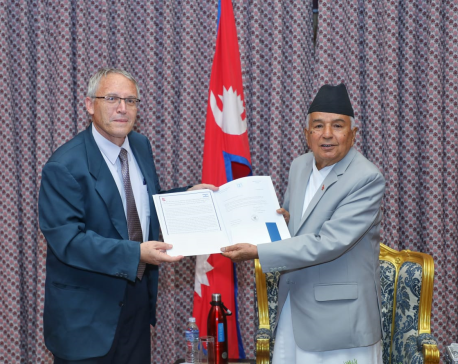
Israeli envoy presents BP Koirala's rare speech to President Paudel
KATHMANDU, Sept 13: Israel has handed over the rare speech of BP Koirala, a towering personality of Nepal's democratic movement... Read More...

41st BP Memorial Day being observed today
KATHMANDU, July 22: The 41st BP Memorial Day is being celebrated across the country today, commemorating the contribution of the... Read More...

Conflict in age of extremes
World’s major powers have largely resumed their Cold War postures preparing themselves for open conflict ... Read More...
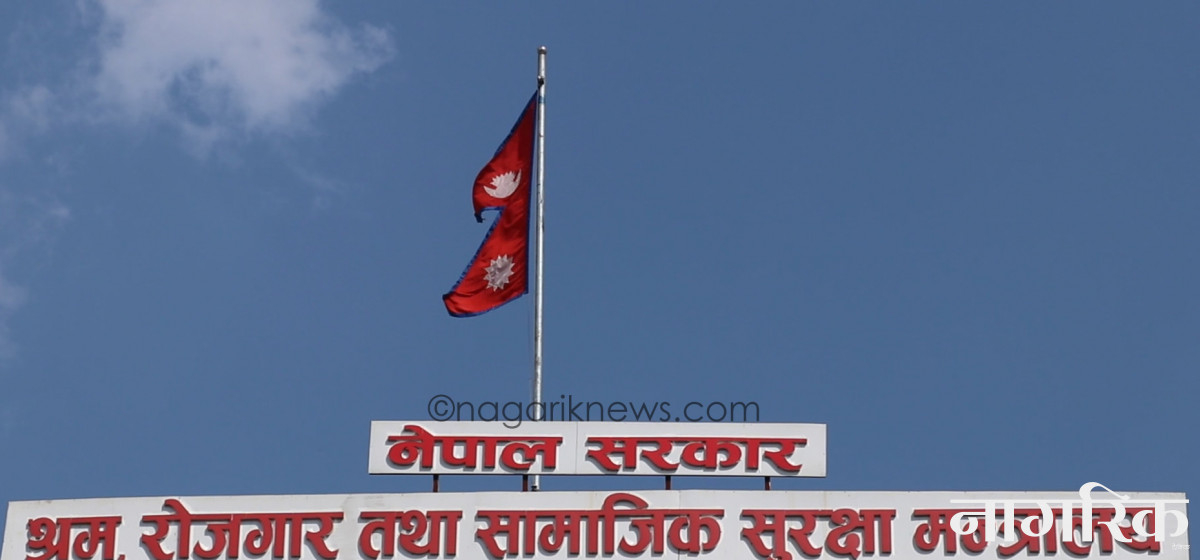

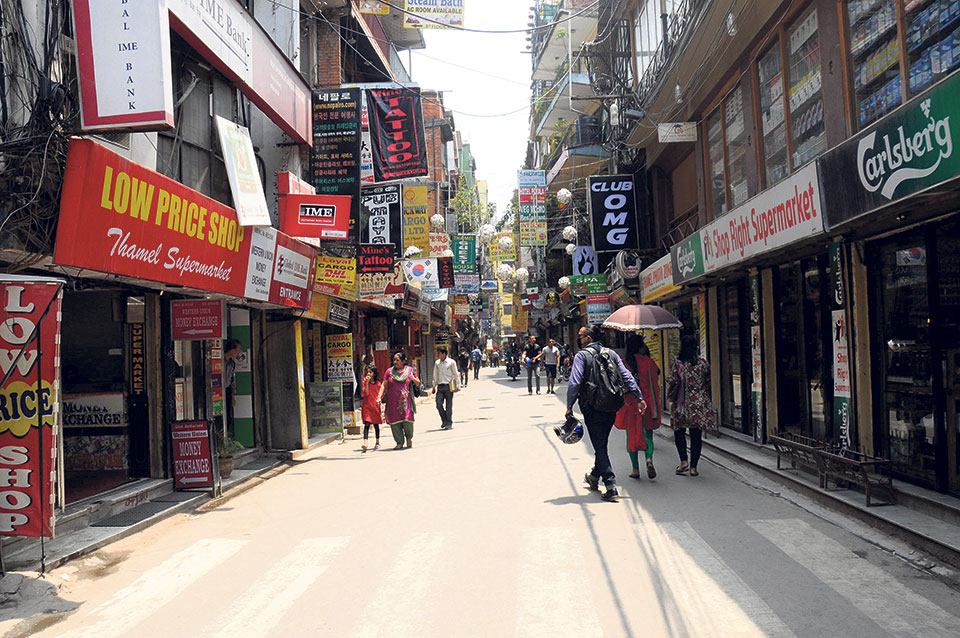

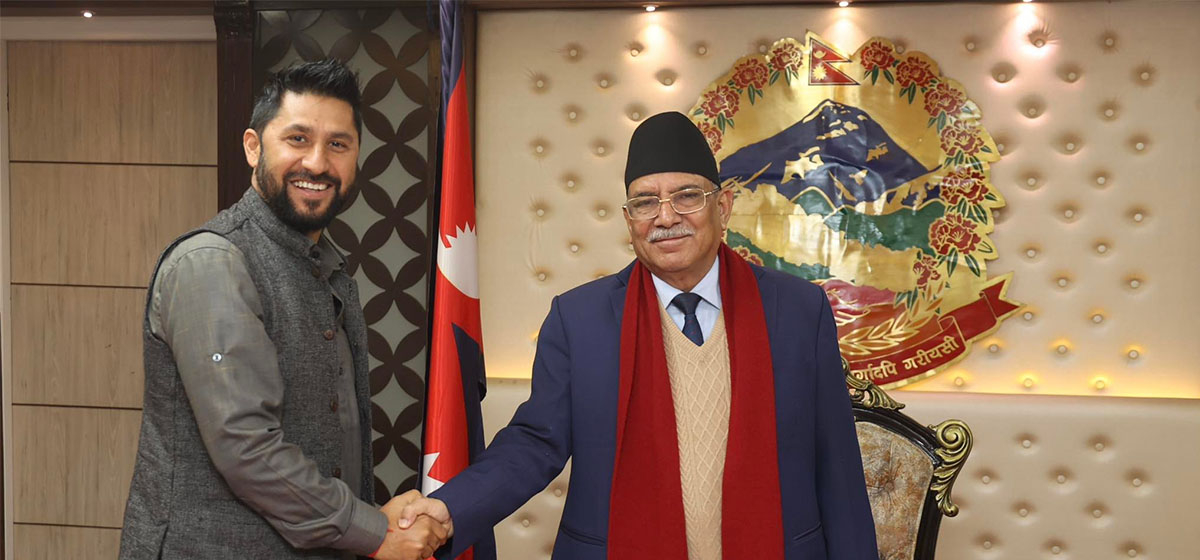
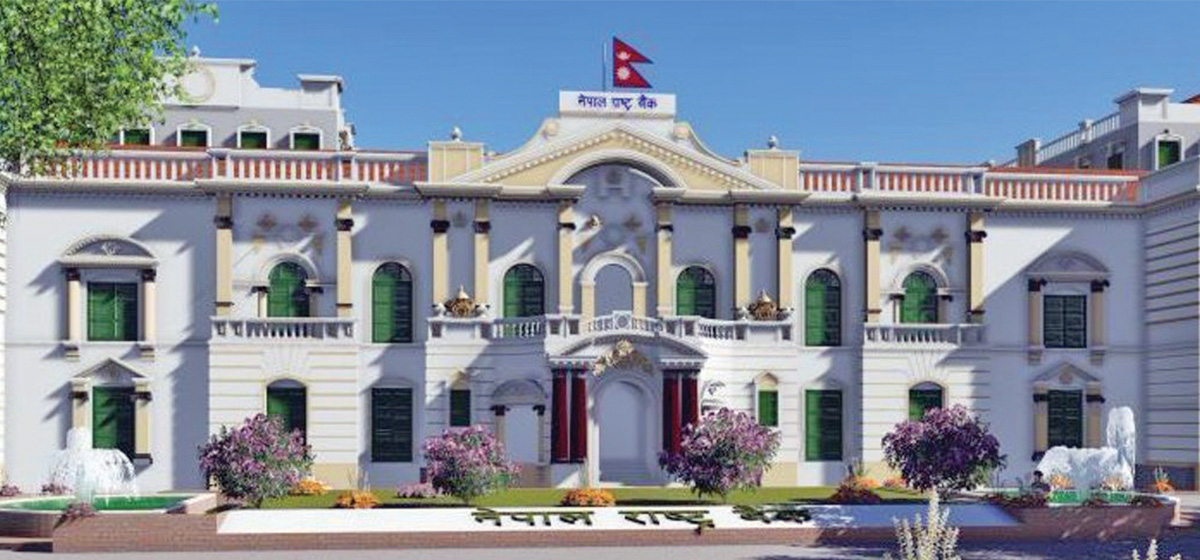
Just In
- Trekking route to Mount Api Base Camp opens (with pictures)
- Handicraft fair to take place in Thamel
- DHM urges caution as the next two days likely to be hotter
- NATTA Gandaki Province Chapter to promote Nepali tourism in Chinese cities
- SC quashes writ petition filed against appointment of Sudurpaschim Chief Minister
- Hope and trust with RSP
- BFIs’ increased lending against shares failed to boost share market in the first nine months of current FY
- Support for Innovation and Entrepreneurship Vital for Nepal's Economic Growth



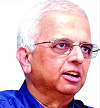


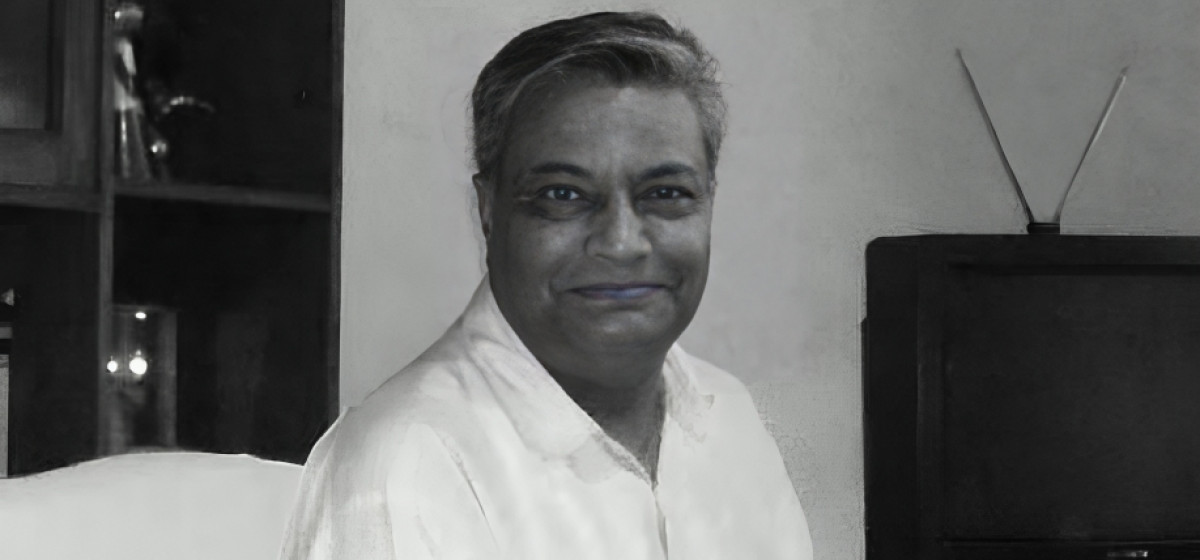

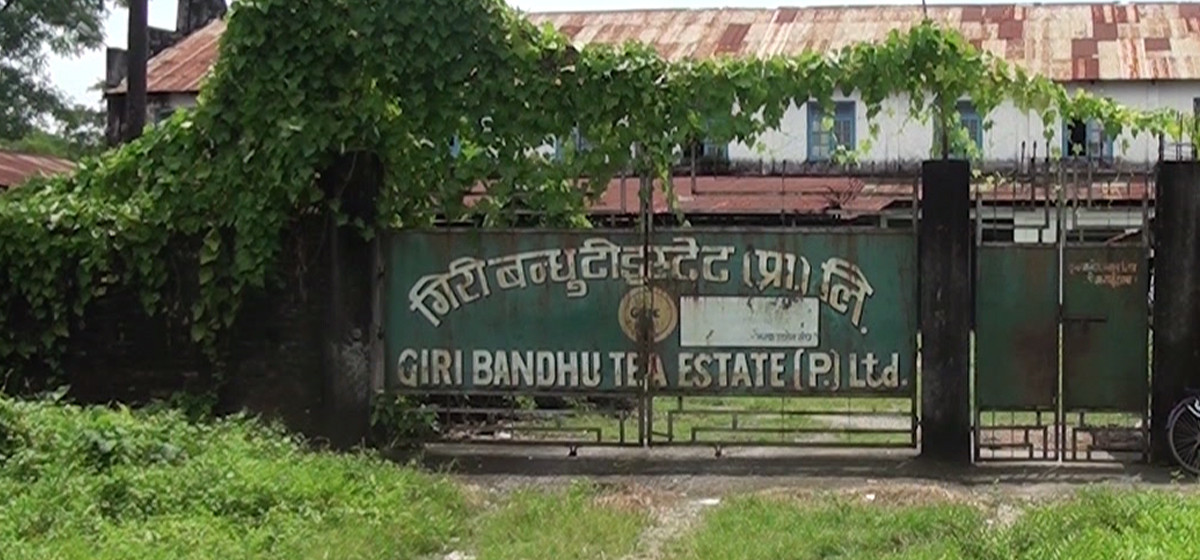
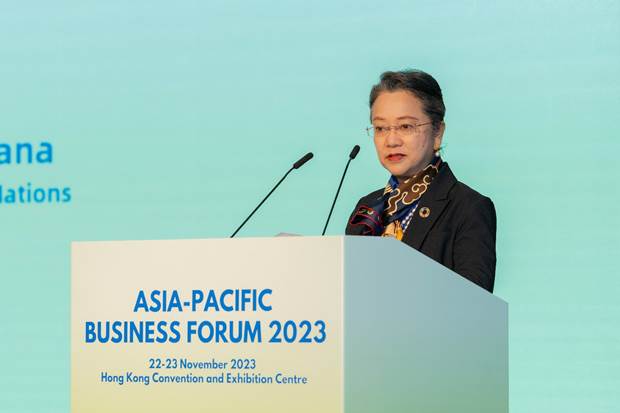
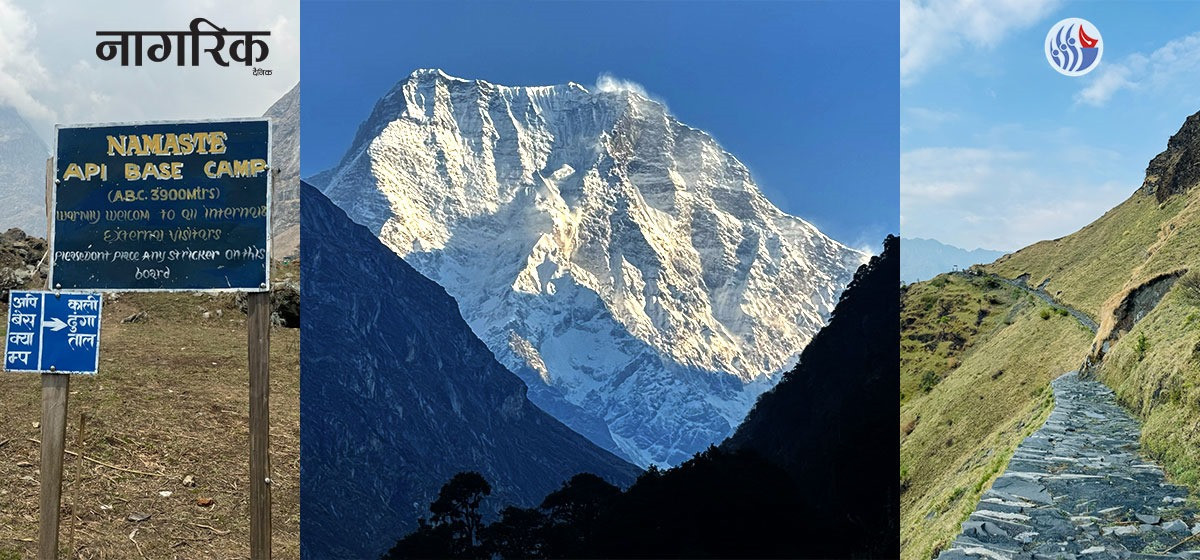

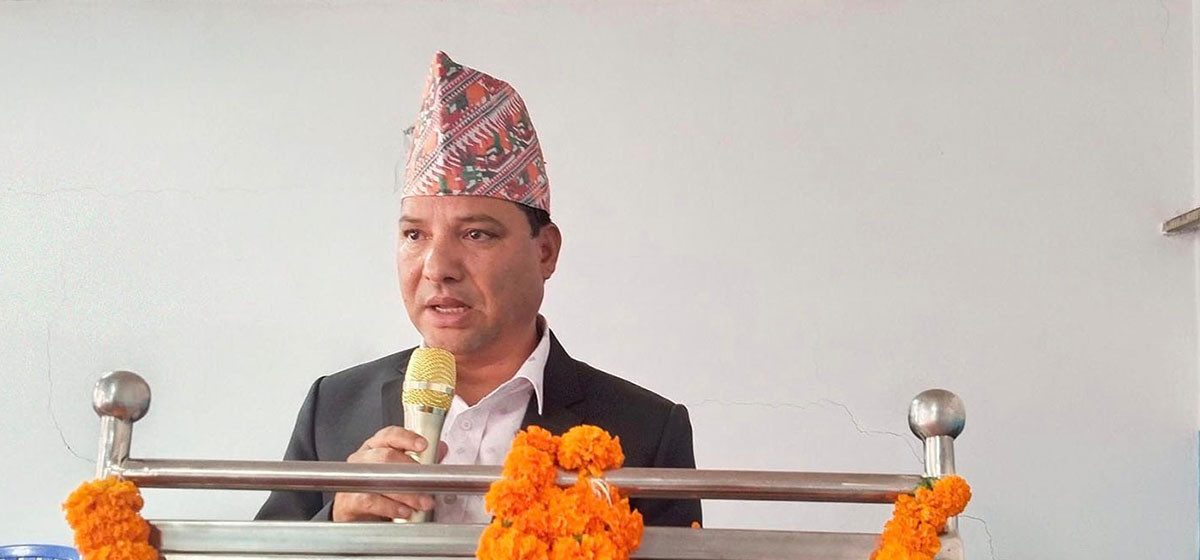

Leave A Comment